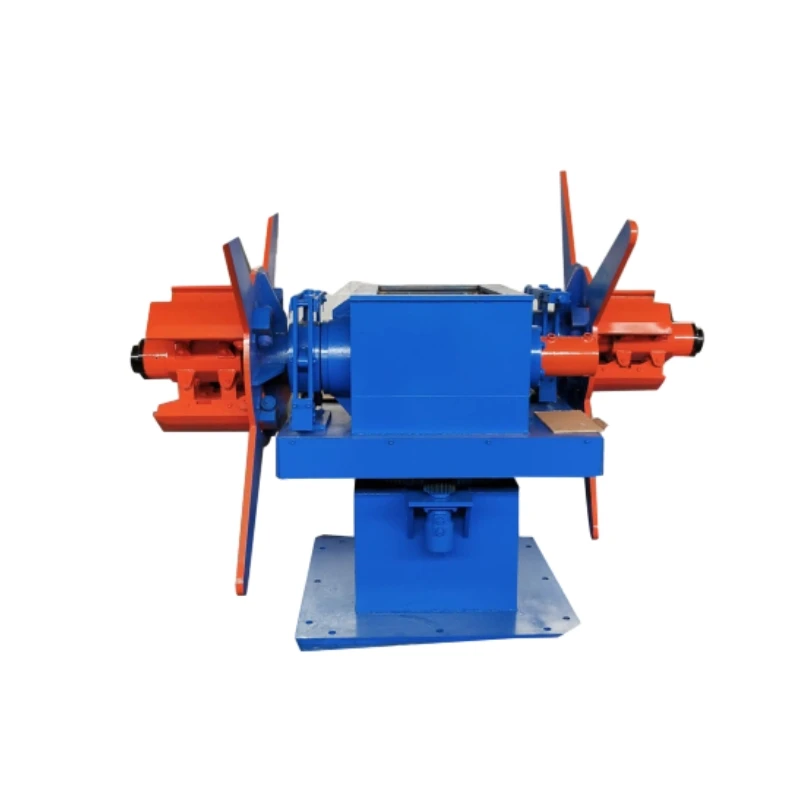Innovative Metal Roll Forming Solutions for Efficient Production and Design Flexibility
Understanding Metal Roll Forming Systems An Overview
Metal roll forming systems have revolutionized the manufacturing industry by providing efficient and precise methods for producing metal components. This process is essential in various applications, from construction to automotive and beyond. Understanding the intricacies of metal roll forming systems helps businesses optimize production, reduce waste, and enhance product quality.
What is Metal Roll Forming?
Metal roll forming is a continuous bending process where a metal strip passes through a series of rollers or dies that progressively shape the material into desired profiles. Unlike traditional methods, which often involve cutting and machining, roll forming is a cost-effective and efficient technique suitable for creating long lengths of uniform cross-sectional shapes. This makes it ideal for producing components like metal roofing, siding, and structural supports.
The Roll Forming Process
The roll forming process begins with a flat metal sheet, typically made of steel, aluminum, or other alloys. The metal strip is fed into a series of rollers arranged in a specific configuration corresponding to the final desired shape. As the strip moves through the rollers, it experiences incremental bending, ultimately achieving the target form.
One of the standout features of roll forming is its ability to produce complex shapes with tight tolerances while maintaining strength and durability. The continuous nature of the process allows for high production rates, making it particularly advantageous for high-volume manufacturing.
Types of Roll Forming Machines
Metal roll forming systems come in various configurations, each tailored to specific applications
1. Traditional Roll Forming Machines These machines consist of multiple roll stations and are widely used for producing standard profiles. They can be adjusted to create custom shapes, offering flexibility to manufacturers.
2. High-Precision Roll Forming Machines Designed for industries demanding strict tolerances, these systems utilize advanced technologies such as servo motors and computerized controls to enhance accuracy and repeatability.
3. Cut-to-Length Systems Integrated into roll forming lines, these systems cut the formed metal into predetermined lengths, streamlining the production process and reducing waste.
4. Inline Forming Systems These machines allow for the integration of secondary operations like punching or notching, enabling manufacturers to produce more complex and finished parts in one continuous process.
Key Advantages of Roll Forming
metal roll forming systems

- Cost Efficiency The continuous nature of roll forming reduces labor costs and minimizes material waste, translating into significant savings for manufacturers.
- High Production Speed Roll forming systems can produce large quantities of product quickly, making them ideal for high-demand industries.
- Consistency and Precision The process delivers consistent and high-quality products with tight tolerances, essential for applications where reliability is critical.
- Versatility Metal roll forming systems can accommodate various materials and thicknesses, allowing for diverse applications across different industries.
- Minimal Tooling Changes Changes in product design often require minimal alterations to existing roll forming lines, thus reducing downtime and production halts.
Applications of Roll Forming
Metal roll forming finds applications in multiple sectors
1. Construction Used for producing roofing panels, wall cladding, and structural components that require durability and weather resistance.
2. Automotive Essential for creating components such as body panels, chassis parts, and reinforcements that meet stringent safety standards.
3. Electronics Roll formed metal parts are utilized in creating enclosures, brackets, and chassis for electronic devices, ensuring strength and precision.
4. HVAC It plays a crucial role in manufacturing ductwork and other HVAC components, providing energy efficiency and reliability.
Conclusion
In conclusion, metal roll forming systems represent a vital technology in modern manufacturing, characterized by efficiency, precision, and versatility. As industries evolve and seek smarter production methods, understanding and investing in roll forming capabilities will be crucial for maintaining competitive advantages. With continued advancements in technology and automation, the future of metal roll forming looks promising, offering even greater potential for innovation in various applications.
-
High Frequency Straight Seam Welded Pipe Production Line-BzZhou Xinghua Machinery Equipment Manufacturing Co., LTD.|line pipe steel&welded gas pipeNewsJul.30,2025
-
High Frequency Straight Seam Welded Pipe Production Line-BzZhou Xinghua Machinery Equipment Manufacturing Co., LTD.|High Precision&Automated SolutionsNewsJul.30,2025
-
High Frequency Straight Seam Welded Pipe Production Line - BzZhou Xinghua Machinery Equipment Manufacturing Co., Ltd.NewsJul.30,2025
-
High Frequency Straight Seam Welded Pipe Production Line-BzZhou Xinghua Machinery Equipment Manufacturing Co., LTD.|Precision Welding, High EfficiencyNewsJul.30,2025
-
High Frequency Straight Seam Welded Pipe Production Line|BzZhou Xinghua|Precision Welding&EfficiencyNewsJul.30,2025
-
High Frequency Straight Seam Welded Pipe Production Line - BzZhou Xinghua|Precision Engineering&EfficiencyNewsJul.30,2025


